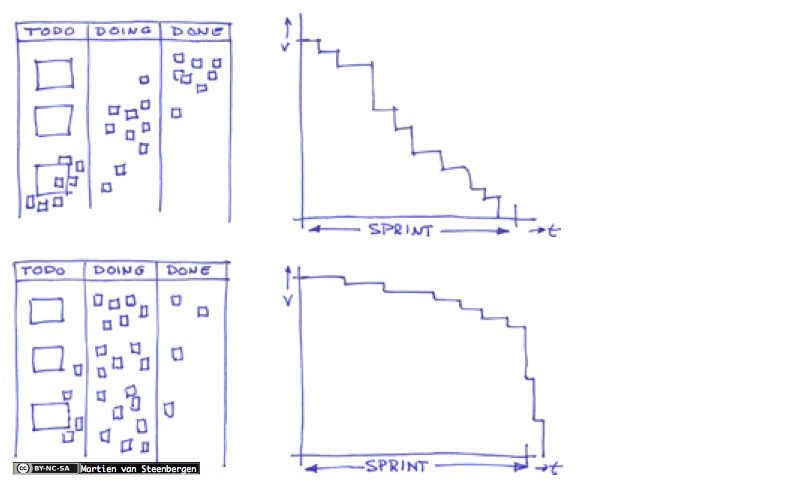Start what you finish and finish what you start
…evolving a product or project by eating away at a pool of work.
✣ ✣ ✣
{{{wish full}}}
One of the core dysfunctions in scrum is pulling all items from the sprint backlog into progress, working on all of them in parallel, and, maybe, finishing them stressfully just before the end of the sprint. The burn down chart shows the ‘student signature’ rather than the healthier gradual, daily reduction of work remaining. The scrum board should display a ‘snow plow pattern’ rather than a “vertical bar pattern’.
Having all work in progress creates distress, uncertainty, inconvenience, and makes planning harder. An effective way to address this is by putting a work in progress limit on the in progress state that compels the squad to start working on a new item if and only if finishing one of the items in in progress.
Therefore:
{{{therefore full}}}
✣ ✣ ✣
Similar to stop starting and start finishing.
✣ ✣ ✣
[[wish::ka-ching a day makes product owner hurray. You want your work to have some impact, outcome. You want to get things done. Progressing the items closest to the finish take the least amount of effort and start generating returns from the moment they finish, while opening up a slot that can be replenished with new work.|]] A.k.a. Stop Starting. Start Finishing
